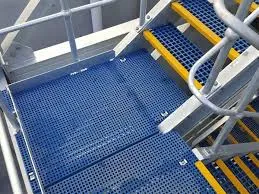
-
 Afrikaans
Afrikaans -
 Albanian
Albanian -
 Amharic
Amharic -
 Arabic
Arabic -
 Armenian
Armenian -
 Azerbaijani
Azerbaijani -
 Basque
Basque -
 Belarusian
Belarusian -
 Bengali
Bengali -
 Bosnian
Bosnian -
 Bulgarian
Bulgarian -
 Catalan
Catalan -
 Cebuano
Cebuano -
 China
China -
 China (Taiwan)
China (Taiwan) -
 Corsican
Corsican -
 Croatian
Croatian -
 Czech
Czech -
 Danish
Danish -
 Dutch
Dutch -
 English
English -
 Esperanto
Esperanto -
 Estonian
Estonian -
 Finnish
Finnish -
 French
French -
 Frisian
Frisian -
 Galician
Galician -
 Georgian
Georgian -
 German
German -
 Greek
Greek -
 Gujarati
Gujarati -
 Haitian Creole
Haitian Creole -
 hausa
hausa -
 hawaiian
hawaiian -
 Hebrew
Hebrew -
 Hindi
Hindi -
 Miao
Miao -
 Hungarian
Hungarian -
 Icelandic
Icelandic -
 igbo
igbo -
 Indonesian
Indonesian -
 irish
irish -
 Italian
Italian -
 Japanese
Japanese -
 Javanese
Javanese -
 Kannada
Kannada -
 kazakh
kazakh -
 Khmer
Khmer -
 Rwandese
Rwandese -
 Korean
Korean -
 Kurdish
Kurdish -
 Kyrgyz
Kyrgyz -
 Lao
Lao -
 Latin
Latin -
 Latvian
Latvian -
 Lithuanian
Lithuanian -
 Luxembourgish
Luxembourgish -
 Macedonian
Macedonian -
 Malgashi
Malgashi -
 Malay
Malay -
 Malayalam
Malayalam -
 Maltese
Maltese -
 Maori
Maori -
 Marathi
Marathi -
 Mongolian
Mongolian -
 Myanmar
Myanmar -
 Nepali
Nepali -
 Norwegian
Norwegian -
 Norwegian
Norwegian -
 Occitan
Occitan -
 Pashto
Pashto -
 Persian
Persian -
 Polish
Polish -
 Portuguese
Portuguese -
 Punjabi
Punjabi -
 Romanian
Romanian -
 Russian
Russian -
 Samoan
Samoan -
 Scottish Gaelic
Scottish Gaelic -
 Serbian
Serbian -
 Sesotho
Sesotho -
 Shona
Shona -
 Sindhi
Sindhi -
 Sinhala
Sinhala -
 Slovak
Slovak -
 Slovenian
Slovenian -
 Somali
Somali -
 Spanish
Spanish -
 Sundanese
Sundanese -
 Swahili
Swahili -
 Swedish
Swedish -
 Tagalog
Tagalog -
 Tajik
Tajik -
 Tamil
Tamil -
 Tatar
Tatar -
 Telugu
Telugu -
 Thai
Thai -
 Turkish
Turkish -
 Turkmen
Turkmen -
 Ukrainian
Ukrainian -
 Urdu
Urdu -
 Uighur
Uighur -
 Uzbek
Uzbek -
 Vietnamese
Vietnamese -
 Welsh
Welsh -
 Bantu
Bantu -
 Yiddish
Yiddish -
 Yoruba
Yoruba -
 Zulu
Zulu
Fiberglass Ducts Showcase Outstanding Durability and Resistance in Various Applications
The Exceptional Resistance of Fiberglass Ducts
In today's industrial and commercial environments, the choice of materials for ductwork systems is vital to ensure durability, efficiency, and safety. Among the options available, fiberglass ducts stand out for their exceptional resistance to various environmental challenges, making them an optimal choice for many applications. This article delves into the properties that contribute to the remarkable resilience of fiberglass ducts and explores their advantages over traditional duct materials.
Fiberglass ducts are composed of a composite material that combines glass fibers with resins, resulting in a structure that is both lightweight and robust. One of the primary factors contributing to their exceptional resistance is their ability to withstand corrosive environments. Unlike metal ducts that can suffer from rust and corrosion when exposed to moisture and chemical vapors, fiberglass does not react with these substances. This characteristic makes fiberglass ducts ideal for applications in industries such as chemical processing, food and beverage manufacturing, and wastewater treatment, where exposure to harsh chemicals is common.
In addition to chemical resistance, fiberglass ducts exhibit excellent thermal insulation properties. The unique composition of fiberglass allows for minimal heat transfer, which helps maintain consistent temperatures in HVAC (heating, ventilation, and air conditioning) systems. This thermal efficiency not only enhances comfort levels but also reduces energy consumption and operating costs. Moreover, fiberglass ducts can withstand extreme temperatures, making them suitable for high-heat applications without risk of degradation.
The lightweight nature of fiberglass ducts also presents significant advantages. Installation is often quicker and more cost-effective, as workers can handle and maneuver the materials with ease. Furthermore, the reduced weight decreases the structural load on buildings, which can potentially lower construction costs and improve building design flexibility.
fiberglass ducts demonstrate exceptional resistance against ...

Another remarkable characteristic of fiberglass ducts is their resistance to mold and bacteria. As public health concerns continue to grow, particularly in the context of improved indoor air quality, building owners are seeking solutions that can mitigate health risks associated with HVAC systems. Fiberglass ducts do not provide a conducive environment for mold, mildew, or bacterial growth, which helps maintain a cleaner and healthier air quality in commercial and industrial facilities.
Additionally, fiberglass ducts contribute to sound attenuation. The composition of fiberglass naturally dampens sound, making it an excellent choice for use in environments where noise reduction is important, such as schools, hospitals, and office buildings. This acoustic benefit enhances the overall comfort and productivity of occupants.
Considering the longevity of fiberglass ducts, they prove to be a cost-effective investment. Their resistance to corrosion, thermal efficiency, and low maintenance requirements mean that once installed, they can provide years of reliable service without the need for frequent repairs or replacements. This durability not only helps businesses save on maintenance costs but also reduces the environmental impact associated with manufacturing and disposing of traditional duct materials.
In conclusion, fiberglass ducts demonstrate exceptional resistance against a range of environmental challenges including corrosion, temperature extremes, and microbial growth. Their advantages, such as lightweight structure, thermal efficiency, and acoustic properties, make them a superior choice for various industrial and commercial applications. As industries continue to seek innovative solutions to enhance safety, efficiency, and sustainability, fiberglass ducts are poised to play a crucial role in the future of ductwork systems. Selecting fiberglass ducts not only ensures a resilient infrastructure but also aligns with modern demands for environmental responsibility and health-conscious design.









